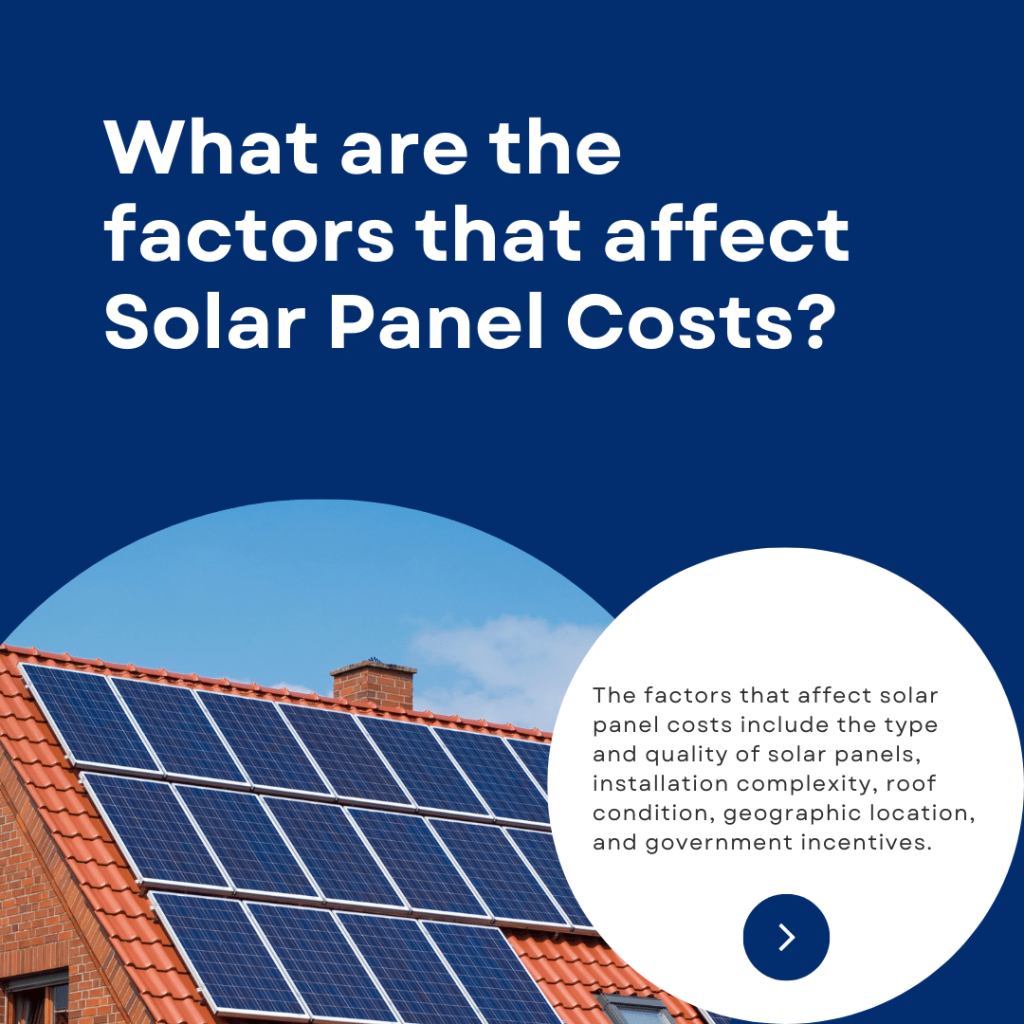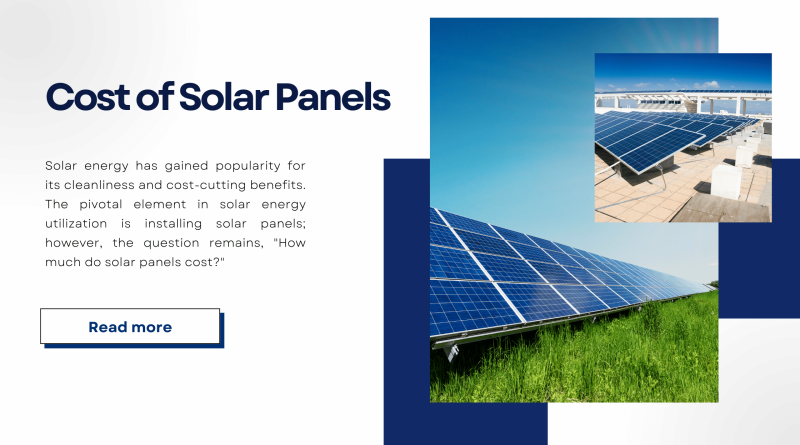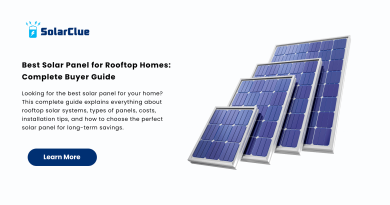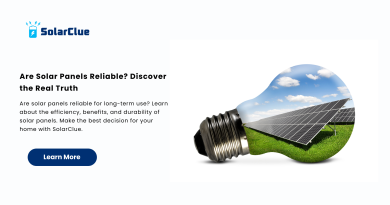Understanding the Cost for Solar Panels: A Comprehensive Guide
Solar energy has gained popularity for its cleanliness and cost-cutting benefits. The pivotal element in solar energy utilization is installing solar panels; however, the question remains, “How much do solar panels cost?” This blog explores solar panel pricing intricacies, considering factors like technology type, installation costs, and government incentives. Moreover, while traditional panels may have higher upfront costs, they offer long-term benefits. Additionally, the reduced electricity bills make solar energy a financially and environmentally wise investment.
Table of Contents
Solar Panel Cost: Breaking Down the Numbers
In India, the cost of solar panels can fluctuate based on several factors, including the system’s size, the type and quality of panels, and the geographical location. The average cost for solar panels in India is influenced by various circumstances, and for a standard 6-kilowatt (kW) system, the range can be approximately ₹4,50,000 to ₹6,00,000. This estimate encompasses expenses related to equipment, installation, and other associated costs. It’s important to emphasize that individual situations and regional variations can lead to significant cost differences.
Factors Affecting Solar Panel Costs

1. System Size: The size of the solar panel system you choose will directly impact the cost. Generally, a larger system will require more panels, inverters, and installation labor, resulting in a higher overall price.
2. Panel Type and Efficiency: Solar panels come in various types, such as monocrystalline, polycrystalline, and thin-film. Monocrystalline panels, known for their higher efficiency, tend to be more expensive. Conversely, polycrystalline and thin-film panels are typically less expensive but may require more space to achieve the same power output.
3. Location: The geographic location of your property plays a significant role in determining the cost of solar panels. Factors such as local regulations, permit fees, labor costs, and the availability of solar incentives or rebates can vary between regions, impacting the overall price.
4. Additional Equipment: Apart from the solar panels themselves, other necessary components, such as inverters, wiring, mounting systems, and batteries, can also contribute to the overall cost. These additional equipment costs are essential for optimizing energy efficiency and system performance.
5. Installation Complexity: The ease of installation can also affect solar panel costs. If your property has obstacles like shading, complex roof structures, or limited space, additional labor and equipment may be required, increasing the overall price.
Long-Term Benefits of Solar Energy
While solar panel costs can initially seem significant, it’s important to consider the long-term benefits and return on investment. Here are a few reasons why investing in solar energy can be advantageous:
1. Energy Savings: Once you have solar panels installed, your electricity bills are likely to decrease significantly. In many cases, homeowners can even reduce their reliance on the grid and generate excess energy that can be sold back to the utility company, further offsetting costs.
2. Increased Property Value: Solar energy is a desirable asset that can increase the value of your property. Studies have shown that homes equipped with solar panels tend to sell faster and at a higher price than those without.
3. Environmental Benefits: Solar energy is clean and sustainable, producing no harmful emissions. Utilizing solar power reduces your carbon footprint and contributes to a greener, more sustainable future.
4. Government Incentives: Many governments offer various incentives, tax credits, and rebates to encourage homeowners to switch to solar energy. These financial benefits can help offset the initial cost and promote a faster return on investment.
5. Energy Independence: By relying on solar power, you become less vulnerable to rising utility prices and potential power outages. With a solar panel system and battery storage, you can have a reliable source of electricity even during emergencies or grid failures.
Conclusion
Investing in solar panels can have a long-lasting impact on both your wallet and the environment. While the cost of solar panels may initially seem high, the future savings and benefits far outweigh the initial investment. Understanding the factors that affect solar panel costs and the long-term advantages of solar energy can help you make an informed decision. By harnessing the power of the sun, you can not only reduce your carbon footprint but also enjoy ongoing energy savings and increased property value. So, when contemplating the purchase of solar panels, remember that the benefits extend far beyond the initial price tag.
“Ready to make the switch to solar? Explore affordable options, government incentives, and financing plans today. Take a step towards a sustainable future and lower energy bills. Start your solar journey now!“
Frequently Asked Questions
Getting solar panels installed at home in India can cost anywhere from around ₹70,000 to ₹1,50,000 per kilowatt, depending on factors like the size of the system and where you live.
Yes, the government in India offers support to reduce the costs. There are programs that provide financial assistance, and you might also get tax benefits to make solar panels more affordable.
Yes, there are different types, like fancy-sounding monocrystalline and polycrystalline. Monocrystalline ones are a bit more expensive, but they work a bit better. It’s like choosing between a regular and a high-end option.
Absolutely! There are ways to pay for solar panels gradually, like getting a solar loan. It’s like paying in installments, so you don’t need to have all the money upfront.
Besides the initial setup, you need to consider some ongoing things like keeping the panels clean and maybe some small fixes. It’s also important to pick good-quality panels and have them installed properly.
Not really. Solar panels in India don’t need much looking after. You might spend a little on cleaning them sometimes, but overall, it’s not a big deal. Think of it like taking care of your phone – not too much effort, but it keeps things running smoothly.
Usually, you’ll start seeing savings on your electricity bills within a few years. The exact time depends on factors like how much sunlight you get and the size of your solar setup.
Yes, you can still use solar panels, but they might be a bit less efficient in areas with less sunlight. It’s like using a flashlight – it works, but it’s better when there’s more light.
Yes, solar tech is always improving! Keep an eye out for new developments – they could make solar panels even more efficient and affordable in the future.
Having solar panels can actually increase your home’s value. It’s like adding a feature that future buyers might really like. Plus, it shows you’ve been smart about energy, which is always a good thing.




